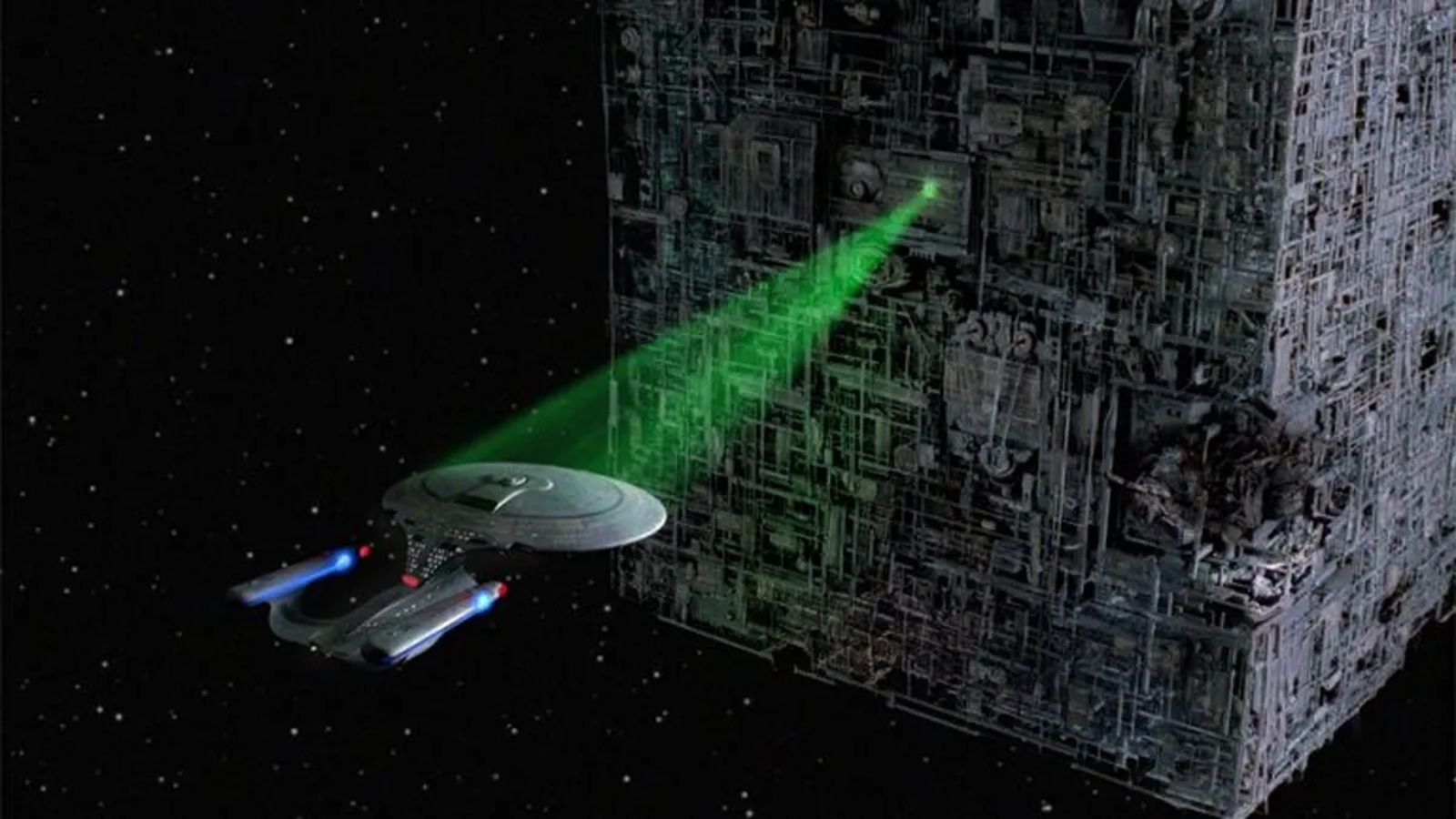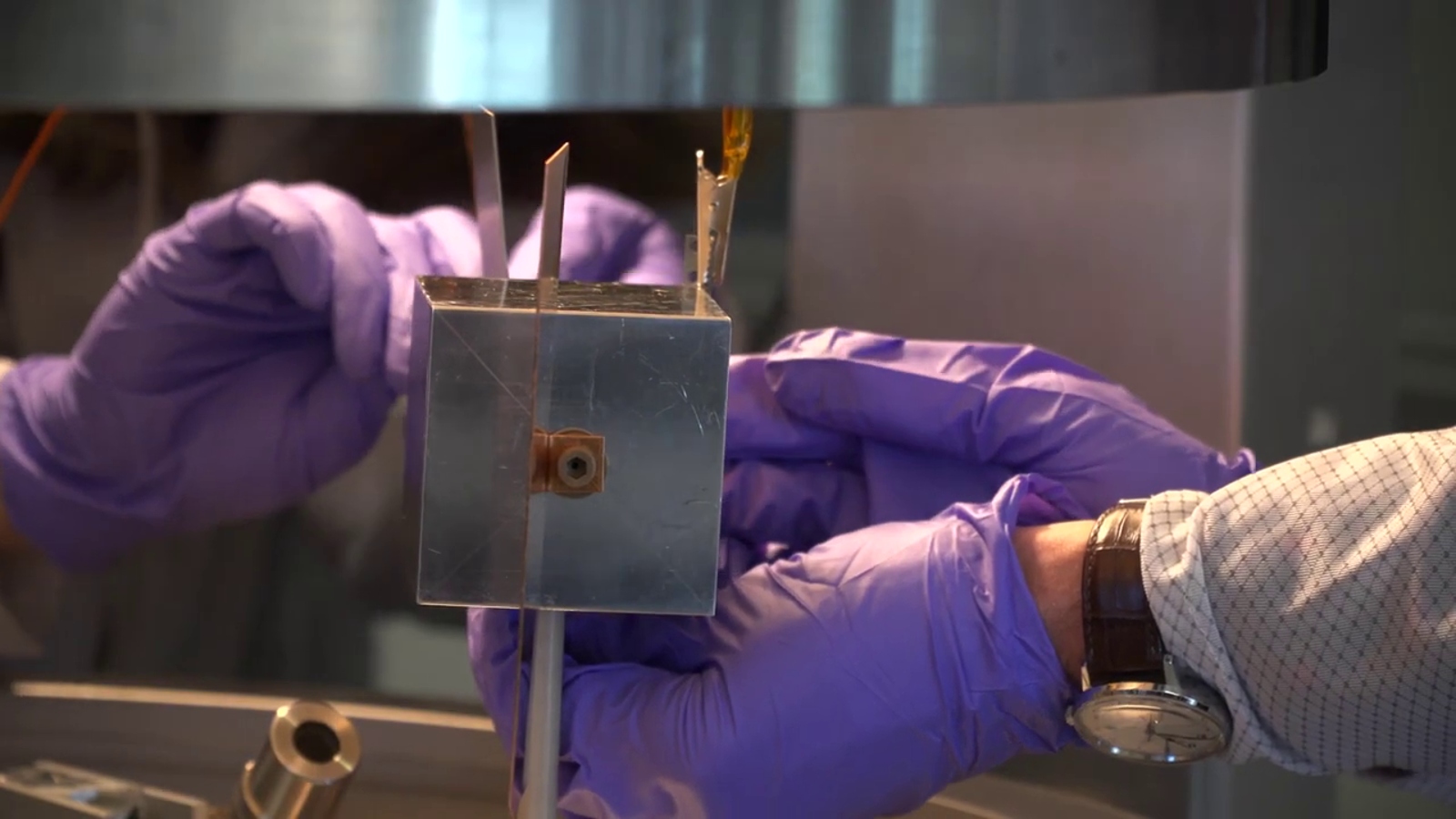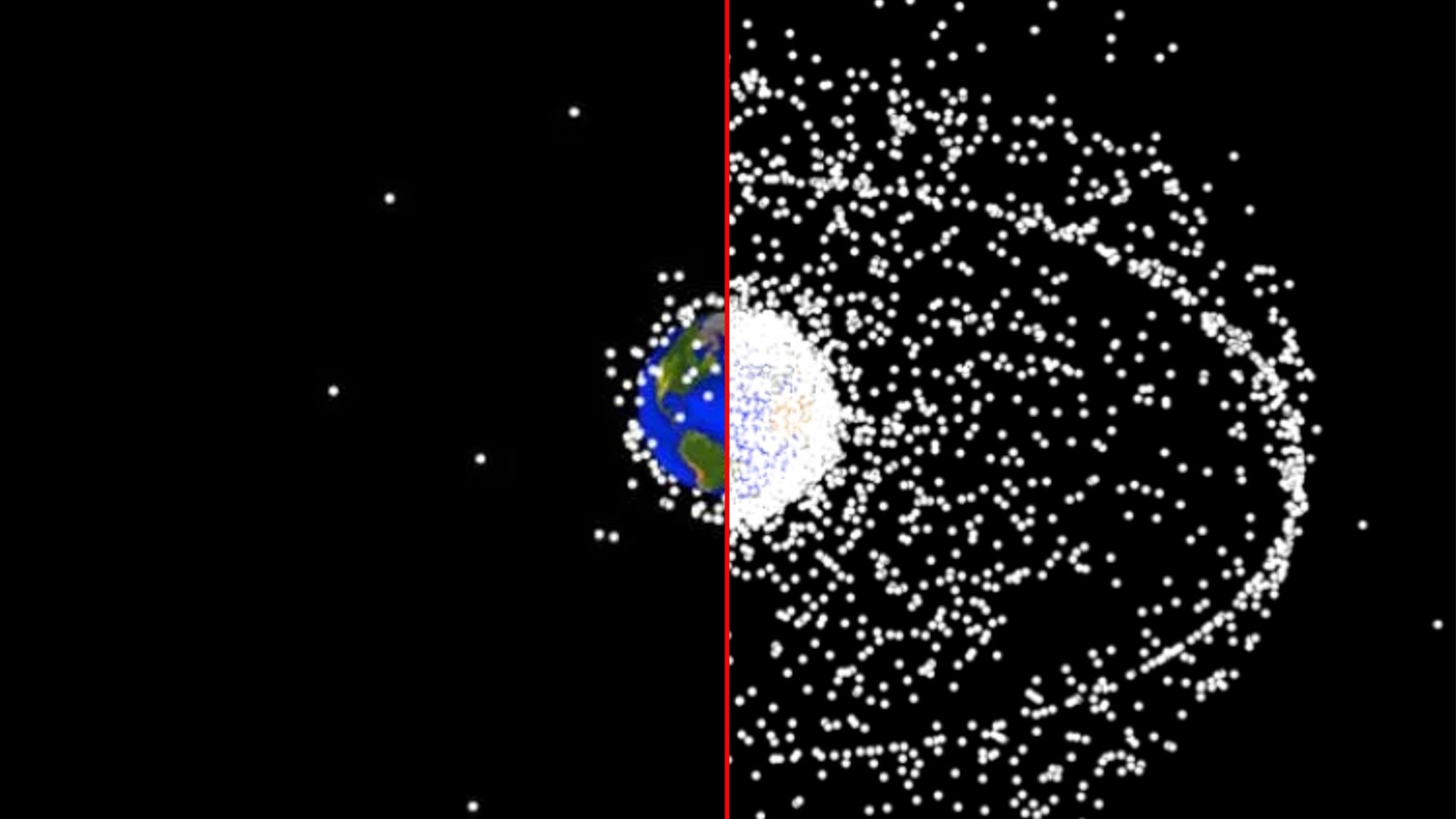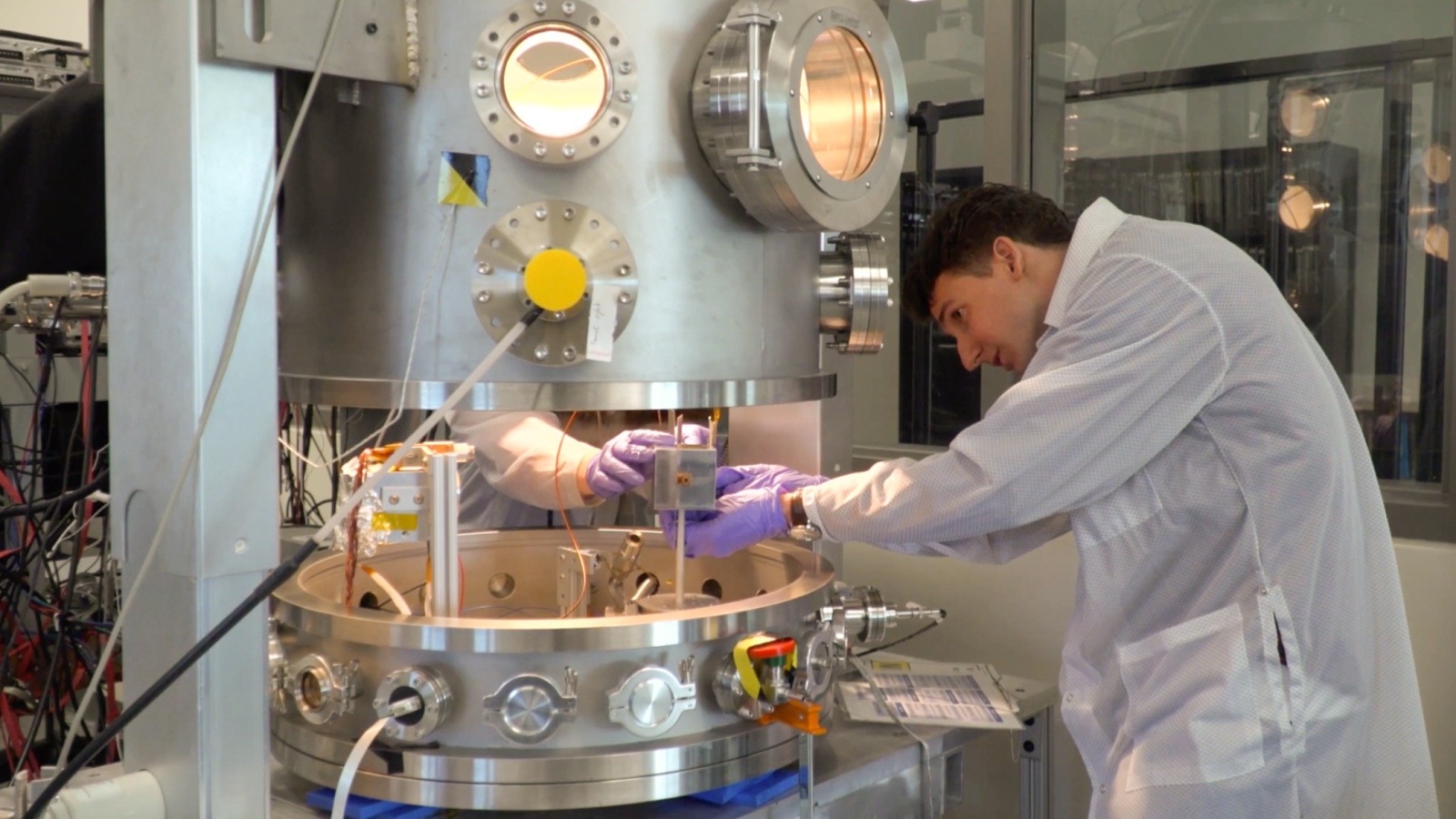Sci-fi inspired tractor beams are real, and could solve a major space junk problem
Researchers are developing a real-life tractor beam, with the goal of pulling defunct satellites out of geostationary orbit to alleviate the space junk problem.
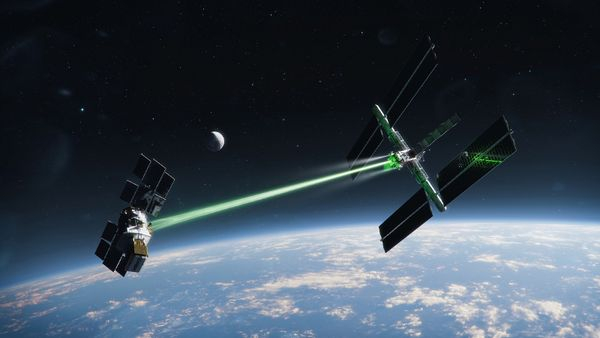
In science fiction films, nothing raises tension quite like the good guys' spaceship getting caught in an invisible tractor beam that allows the baddies to slowly reel them in. But what was once only a sci-fi staple could soon become a reality.
Scientists are developing a real-life tractor beam, dubbed an electrostatic tractor. This tractor beam wouldn't suck in helpless starship pilots, however. Instead, it would use electrostatic attraction to nudge hazardous space junk safely out of Earth orbit.
The stakes are high: With the commercial space industry booming, the number of satellites in Earth's orbit is forecast to rise sharply. This bonanza of new satellites will eventually wear out and turn the space around Earth into a giant junkyard of debris that could smash into working spacecraft, plummet to Earth, pollute our atmosphere with metals and obscure our view of the cosmos. And, if left unchecked, the growing space junk problem could hobble the booming space exploration industry, experts warn.
The science is pretty much there, but the funding is not.
The electrostatic tractor beam could potentially alleviate that problem by safely moving dead satellites far out of Earth orbit, where they would drift harmlessly for eternity.
While the tractor beam wouldn't completely solve the space junk problem, the concept has several advantages over other proposed space debris removal methods, which could make it a valuable tool for tackling the issue, experts told Live Science.
Related: 11 sci-fi concepts that are possible (in theory)
A prototype could cost millions, and an operational, full-scale version even more. But if the financial hurdles can be overcome, the tractor beam could be operational within a decade, its builders say.
Breaking space news, the latest updates on rocket launches, skywatching events and more!
"The science is pretty much there, but the funding is not," project researcher Kaylee Champion, a doctoral student in the Department of Aerospace Engineering Sciences at the University of Colorado Boulder (CU Boulder), told Live Science.
Avoiding Disaster
The tractor beams depicted in "Star Wars" and "Star Trek" suck up spacecraft via artificial gravity or an ambiguous "energy field." Such technology is likely beyond anything humans will ever achieve. But the concept inspired Hanspeter Schaub, an aerospace engineering professor at CU Boulder, to conceptualize a more realistic version.
Schaub first got the idea after the first major satellite collision in 2009, when an active communications satellite, Iridium 33, smashed into a defunct Russian military spacecraft, Kosmos 2251, scattering more than 1,800 pieces of debris into Earth's orbit.
Related: How many satellites orbit Earth?
In the wake of this disaster, Schaub wanted to be able to prevent this from happening again. To do this, he realized you could pull spacecraft out of harm's way by using the attraction between positively and negatively charged objects to make them "stick" together.
Over the next decade, Schaub and colleagues refined the concept. Now, they hope it can someday be used to move dead satellites out of geostationary orbit (GEO) — an orbit around Earth's equator where an object's speed matches the planet's rotation, making it seem like the object is fixed in place above a certain point on Earth. This would then free up space for other objects in GEO, which is considered "prime real estate" for satellites, Schaub said.
How does it work?
The electrostatic tractor would use a servicer spacecraft equipped with an electron gun that would fire negatively charged electrons at a dead target satellite, Champion told Live Science. The electrons would give the target a negative charge while leaving the servicer with a positive charge. The electrostatic attraction between the two would keep them locked together despite being separated by 65 to 100 feet (20 to 30 meters) of empty space, she said.
Once the servicer and target are "stuck together," the servicer would be able to pull the target out of orbit without touching it. Ideally, the defunct satellite would be pulled into a "graveyard orbit" more distant from Earth, where it could safely drift forever, Champion said.
Related: Photo gallery: Eight of the strangest things sent into space
The electrostatic attraction between the two spacecraft would be extremely weak, due to limitations in electron gun technology and the distance by which the two would need to be separated to prevent collisions, project researcher Julian Hammerl, a doctoral student at CU Boulder, told Live Science. So the servicer would have to move very slowly, and it could take more than a month to fully move a single satellite out of GEO, he added.
That's a far cry from movie tractor beams, which are inescapable and rapidly reel in their prey. This is the "main difference between sci-fi and reality," Hammerl said.
Advantages and limitations
The electrostatic tractor would have one big advantage over other proposed space junk removal methods, such as harpoons, giant nets and physical docking systems: It would be completely touchless.
"You have these large, dead spacecraft about the size of a school bus rotating really fast," Hammerl said. "If you shoot a harpoon, use a big net or try to dock with them, then the physical contact can damage the spacecraft and then you are only making the [space junk] problem worse."
Scientists have proposed other touchless methods, such as using powerful magnets, but enormous magnets are both expensive to produce and would likely interfere with a servicer's controls, Champion said.
Related: How do tiny pieces of space junk cause incredible damage?
The main limitation of the electrostatic tractor is how slowly it would work. More than 550 satellites currently orbit Earth in GEO, but that number is expected to rise sharply in the coming decades.
If satellites were moved one at a time, then a single electrostatic tractor wouldn't keep pace with the number of satellites winking out of operation. Another limitation of the electrostatic tractor is that it would work too slowly to be practical for clearing smaller pieces of space junk, so it wouldn't be able to keep GEO completely free of debris.
Cost is the other big obstacle. The team has not yet done a full cost analysis for the electrostatic tractor, Schaub said, but it would likely cost tens of millions of dollars. However, once the servicer were in space, it would be relatively cost-effective to operate it, he added.
Next steps
The researchers are currently working on a series of experiments in their Electrostatic Charging Laboratory for Interactions between Plasma and Spacecraft (ECLIPS) machine at CU Boulder. The bathtub-sized, metallic vacuum chamber, which is equipped with an electron gun, allows the team to "do unique experiments that almost no one else can currently do" in order to simulate the effects of an electrostatic tractor on a smaller scale, Hammerl said.
Once the team is ready, the final and most challenging hurdle will be to secure funding for the first mission, which is a process they have not yet started.
Most of the mission cost would come from building and launching the servicer. However, the researchers would ideally like to launch two satellites for the first tests, a servicer and a target that they can maneuver, which would give them more control over their experiments but also double the cost.
Related: Artemis 1's Orion capsule sends Earth 1st image of home on the way to the moon
If they can somehow wrangle that funding, a prototype tractor beam could be operational in around 10 years, the team previously estimated.
Is it viable?
While tractor beams may sound like a pipe dream, experts are optimistic about the technology.
"Their technology is still in the infancy stage," John Crassidis, an aerospace scientist at the University at Buffalo in New York, who is not involved in the research, told Live Science in an email. "But I am fairly confident it will work."
If you shoot a harpoon, use a big net or try to dock with them, then the physical contact can damage the spacecraft and then you are only making the [space junk] problem worse.
Removing space junk without touching it would also be much safer than any current alternative method, Crassidis added.
The electrostatic tractor "should be able to produce the forces necessary to move a defunct satellite" and "certainly has a high potential to work in practice," Carolin Frueh, an associate professor of aeronautics and astronautics at Purdue University in Indiana, told Live Science in an email. "But there are still several engineering challenges to be solved along the way to make it real-world-ready."
Scientists should continue to research other possible solutions, Crassidis said. Even if the CU Boulder team doesn't create a "final product" to remove nonfunctional satellites, their research will provide a stepping stone for other scientists, he added.
If they are successful, it wouldn't be the first time scientists turned fiction into fact.
"What is today's science fiction could be tomorrow's reality," Crassidis said.

Harry is a U.K.-based staff writer at Live Science. He studied Marine Biology at the University of Exeter (Penryn campus) and after graduating started his own blog site "Marine Madness," which he continues to run with other ocean enthusiasts. He is also interested in evolution, climate change, robots, space exploration, environmental conservation and anything that's been fossilized. When not at work he can be found watching sci-fi films, playing old Pokemon games or running (probably slower than he'd like).

